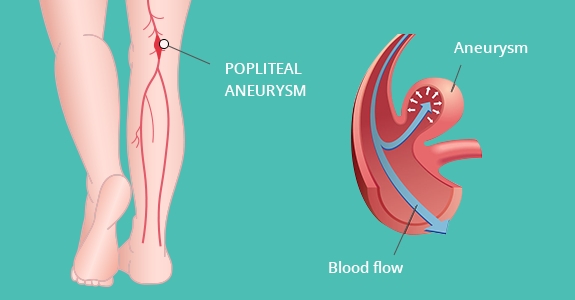Surgical Bypass for Popliteal Aneurysms
In most cases, popliteal aneurysms are treated with surgical bypass. Preferably, a vein is harvested in the leg and is then used to bypass the aneurysm by connecting it to the normal arteries above and below the aneurysm. If vein is not available, a bypass may also be performed using synthetic grafts.
Depending on the anatomy of the aneurysm, one of two approaches is used to create the bypass. Most commonly, two incisions are required. One is made above the knee, on the inside of the leg and the other is below the knee, also on the inside of the leg. The aneurysm is ligated, or sutured closed, so that clot cannot travel down the leg, and the bypass restores flow from the normal artery above to normal arteries below the knee. The other approach also involves a bypass, but a single “S-shaped” incision is made behind the knee.
Popliteal Stenting
In some cases, a patient may not be able to undergo a major operation due to other medical issues.
Popliteal stenting is a minimally-invasive alternative in which a stent is placed through the aneurysm. In principle, the stent functions as an internal bypass which excludes the aneurysm from the circulation so that a blood clot cannot travel down the leg. This procedure does not require general anesthesia and can be done on an out-patient basis.
There are a few downsides to popliteal stenting, however. Patient anatomy plays a large role in whether or not stenting is possible. Our surgeons will review your imaging to determine if stenting is a suitable option given your specific anatomy and overall medical condition.
Another disadvantage is that popliteal stents generally are not as durable as a bypass. The popliteal artery bends and flexes with each step we take, and stents are made of metal. For our younger active patients, there is a risk that metal fatigue could occur causing the stent to fracture which may cause it to thrombose, or clot. For these reasons, unless there are contraindications to open surgery, our surgeons will generally recommend a bypass. Stenting does, however, offer a very good alternative option in a specific group of patients.


